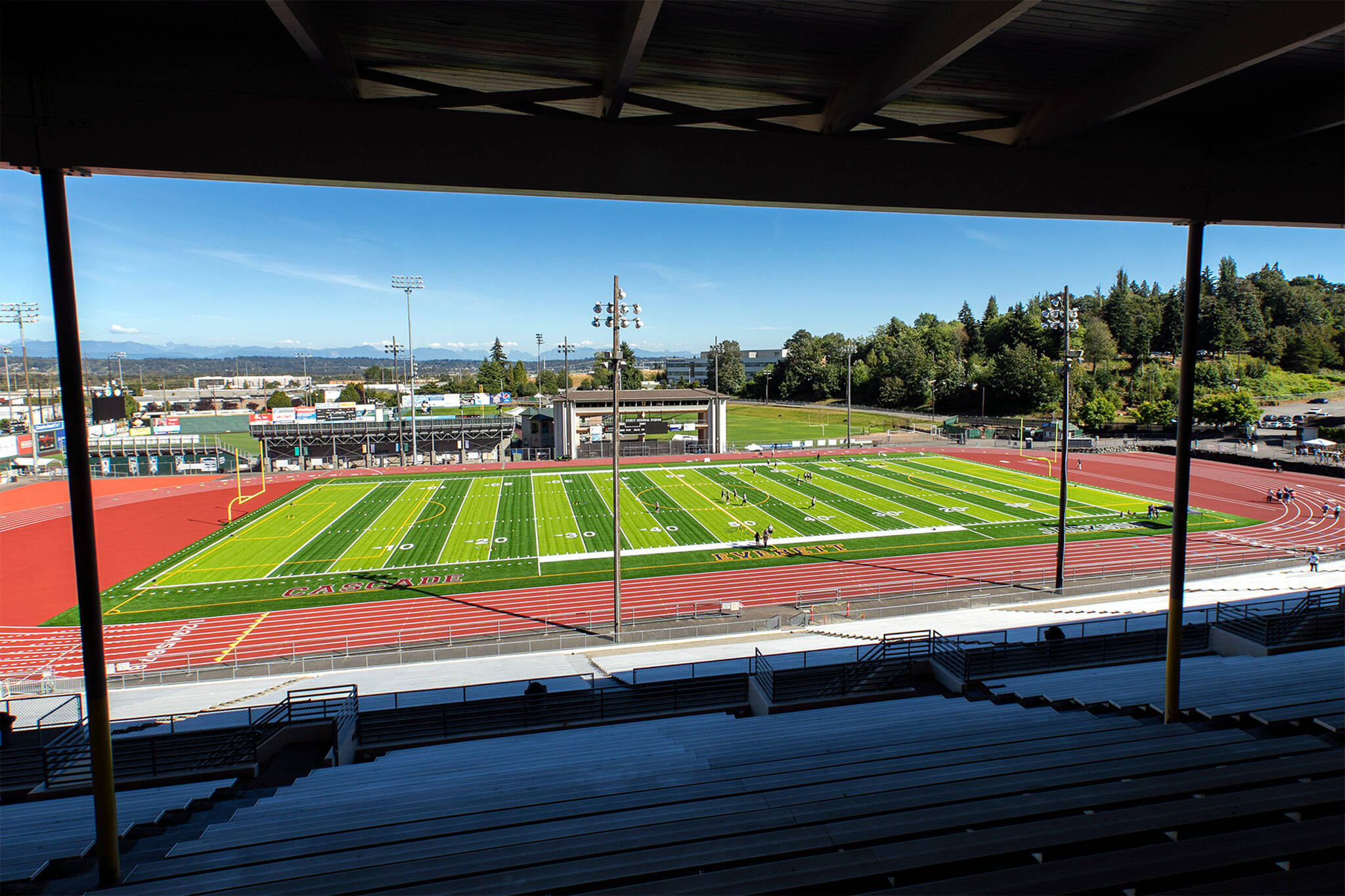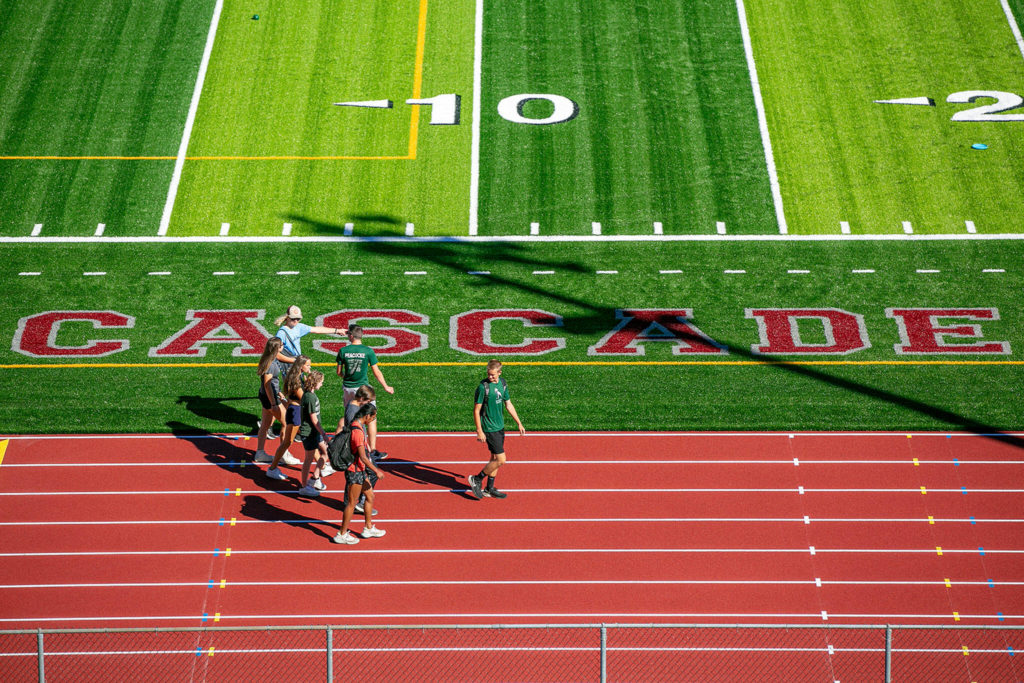EVERETT — Everett Memorial Stadium has a new look.
Gone is the monochrome green of the football field’s artificial turf playing surface, and in its place are alternating shades of green filling each five-yard increment. Spectators on the grandstand side are treated to the names of each of the Everett School District high schools — Cascade, Everett and Jackson — inked into spots on the sideline in their school colors. The running track that surrounds the field remains red, but has brighter hue underneath freshly-lined lanes.
But more important than the visual is the quality of the surfaces. Everett’s schools and the community as a whole just received an athletic upgrade.
The Everett School District held a reopening event for Everett Memorial Stadium on Monday afternoon, giving the district the chance to unveil its brand new field surface and track, which were replaced this summer.
“I try to avoid hyperbole, but I’m very excited with how it turned out,” said Eric Gold, the principal landscape architect at D.A. Hogan & Associates, who served as the project’s architect. “We worked with (Everett School District athletic director) Dani Mundell on the specifics of the design, and we’re very pleased with it.”
Everett Memorial Stadium has been the main hub for the city’s high school athletics ever since the land was first gifted to the Everett School District by the Everett Lodge of Elks and the stadium was opened in 1947. For 50 years football games were played on grass until the first artificial surface was installed in 1997. The turf and track were replaced in 2008, making this the the stadium’s third artificial surface.
Darcy Walker, the Everett School District’s director of facilities and planning, said the artificial turf and track surfaces typically have a lifespan of 10-12 years. The money to replace the surfaces was originally part of the 2020 capital levy that was rejected by voters. However, the state of the surfaces reached the point where the school board agreed to allocate funds from Capital money for replacing the field and track.
“On some of the field’s yard markings the stitching started to break down, and it was getting to the point where it was a safety hazard to the players,” Walker said. “And a significant portion of the track had to undergo spot repairs over the years. We just couldn’t wait any longer, they were really beginning to fail.”
The cost to replace the field was $608,355 and the cost to replace the track was $402,457. Ground was broken on the project on May 25 upon the conclusion of high school spring sports, with the field being replaced first, followed by the track. The final striping on the track was completed last week. The project was finished on time and the field is ready for the start of fall high school sports.
The playing field was replaced by a slightly different artificial surface than it had before. It remains a sheet of long green synthetic filaments that is filled in by a mixture of sand and small granulated pieces of rubber. However, the filaments are two inches long, which is about a half-inch longer than the previous surface, meaning the fill depth is deeper. Also, the granules are made of virgin rubber instead of recycled tires. The result is that the surface is softer and springier than the previous surface. The fill is expected to settle in the coming months, making it less springy than it is now, but it’s still expected to be softer than before.
“It’s just a much safer field now and I’m just really glad to be able to provide a quality field for our program,” said Everett High School football coach Brien Elliot, whose team conducts its first practice on the new surface Wednesday. “The kids get excited when they have good facilities to play on, it makes it a lot more fun for them. I think it adds quite a bit to our individual program and for all the sports teams that play on the field.”
The new track is made of the same rubber material as the previous one. However, based on the input of the school district’s track and field coaches, there were changes made in the locations of some of the field events. The long jump ramps in the previous configuration had their landing pits too close to a rockery wall in the south end of the stadium. Therefore, the ramps and pits were moved about 20 feet so that jumpers whose momentum took them beyond the pit no longer slammed into the wall. Also, the pole vault facility, which was uncomfortably close to the playing field, was moved 15 feet further away.
“Moving the long jump pit out and getting more room there was the biggest priority,” Cascade High School track and field coach Eric Smith said.
“It’s not just the track and field teams, the community gets to use that track so much,” Smith added. “There are people running around that track all day while school is in session, getting workouts in and doing some laps. It really is a community gathering point, and I’m excited for everybody to get to use the facility.”
This story has been modified to say the funds for the project came from Capital money.
Talk to us
> Give us your news tips.
> Send us a letter to the editor.
> More Herald contact information.



























